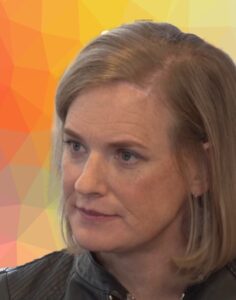Occupation
American computer scientist, electrical engineer, and transgender activist
Birth/Death Dates
Born Robert Saunders
January 2, 1938 –
Summary
Lynn Conway is a famed pioneer of microelectronics chip design. Her innovations during the 1970s at the Xerox Palo Alto Research Center (PARC) have impacted chip design worldwide. Her work has also influenced many high-tech companies and computing methods.
Educational Background
- Columbia University’s School of Engineering and Applied Science (B.S. and M.S.E.E.)
Struggles this Innovator Overcame
Conway is a trans woman who had a successful career at IBM in the 1960s before transitioning. She had hoped to be allowed to transition on the job, but IBM fired Conway in 1968 after she revealed her intention to transition. IBM apologized for this decades later, in 2020.
Upon completing her gender transition in 1968, Conway took on a new name and identity and restarted her career. Only close friends knew about her past. For decades, nobody knew that she had done pioneering research at IBM in the 1960s before transitioning. In 1999, computer historians discovered Conway’s early IBM work and revealed her past. She was scared but realized that times had changed enough that she no longer had to be afraid to be “out.”
Problems this Innovator Solved
Conway greatly simplified chip design by inventing dimensionless, scalable design rules. She invented a powerful method for issuing multiple out-of-order instructions per machine cycle in supercomputers. By solving this fundamental computer architecture problem back in 1965, she made the creation of the first true superscalar computer possible and participated in its design at IBM. Lynn called her invention dynamic instruction scheduling (DIS).
By the 1990s, chips held enough transistors that entire superscalar computers could be put on single chips. Conway’s DIS invention was used in almost all the powerful new PC chips, making them much more powerful than they’d otherwise have been.
How this innovator changed the world (or at least their corner of it)
After her transformation, Conway held a series of positions. She landed a computer architecture job at Memorex in 1971 and was recruited by Xerox’s exciting new Palo Alto Research Center (PARC) in 1973. Her innovations during the 1970s at the Xerox (PARC) have impacted chip design worldwide. Many high-tech companies and computing methods have foundations in her work.
Thousands of chip designers learned their craft from Lynn’s textbook Introduction to VLSI Systems, which she co-authored with Prof. Carver Mead of Caltech. This groundbreaking work became a standard textbook in chip design and was used at nearly 120 universities by 1983. Much of the modern silicon chip design revolution is based on her work.
By 1978, ten years after her gender transition, Lynn was on the verge of international fame in her field for her VLSI innovations. She wrote the seminal textbook on the subject and taught the first prototype course on VLSI systems at M.I.T.
Within two years, universities worldwide were adopting her text for similar courses. The Department of Defense started a major new program to sponsor research to build on her work. Scores of startup companies began incubating and forming to commercialize the knowledge. All this happened without people catching on to Conway’s secret past.
Lasting changes from this innovator’s work or how they trailblazed
Conway’s work has dramatically impacted the modern information technology revolution. Her innovations during the 1970s at the Xerox (PARC) have impacted chip design worldwide. Many high-tech companies and computing methods have foundations in her work.
https://en.wikipedia.org/wiki/Lynn_Conway
Written by Donna Abosch






